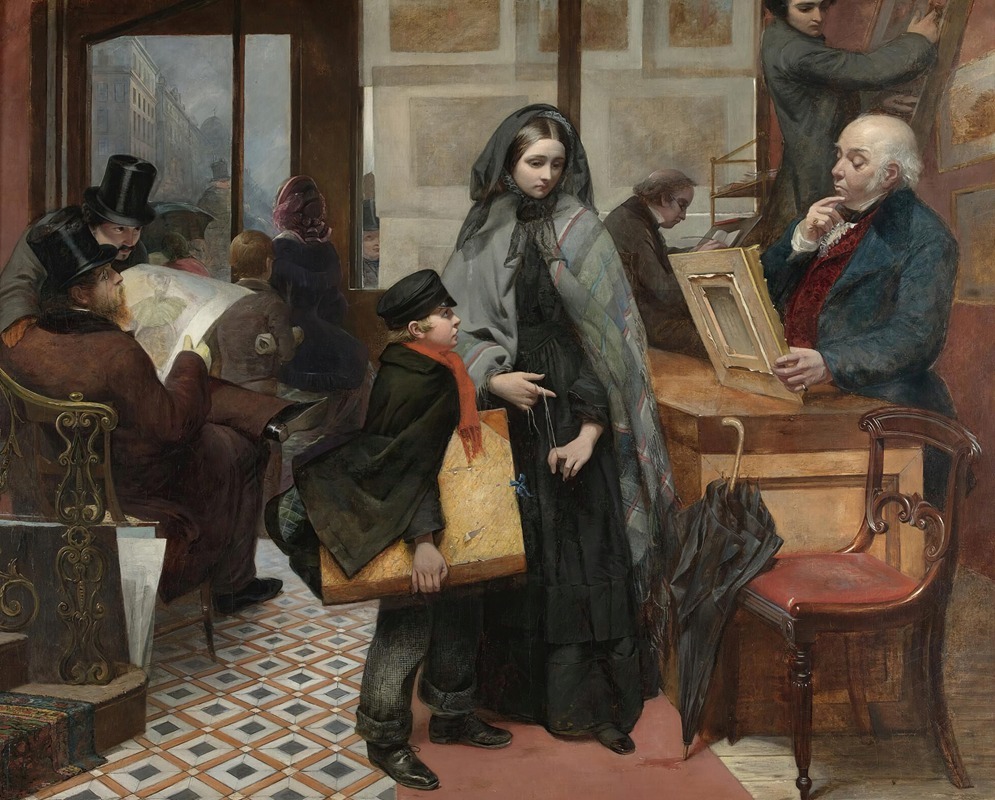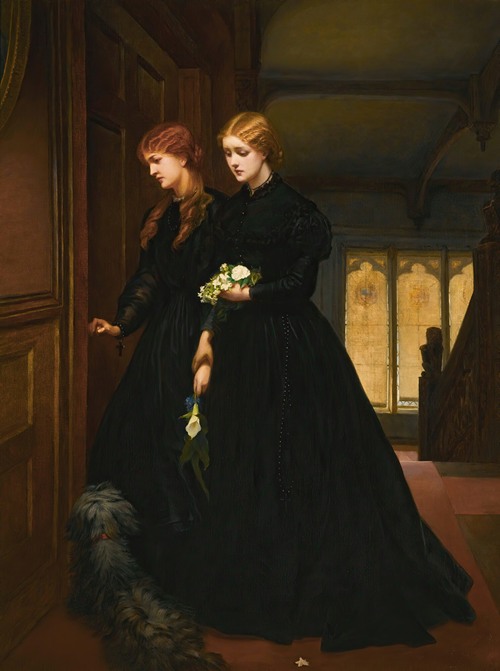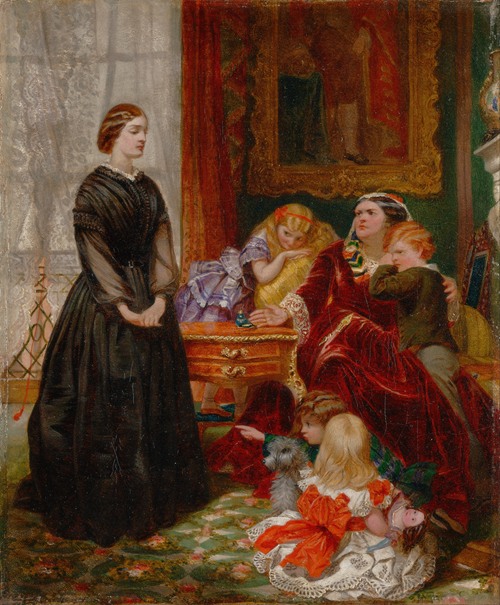
Emily Mary Osborn, or Osborne, was an English painter of the Victorian era. She is known for her pictures of children and her genre paintings, especially on themes of women in distress.
Emily Osborn was born in Kentish Town in London, on 11 February 1828, the eldest of nine children of the Rev. Edward Osborn (1792–1859) and his wife Mary (née Bolland, 1806–1868). Osborn took up the curacy of West Tilbury under its rector Edward Linzee during the spring of 1834, when Emily was about five. The family occupied the parsonage at the top of Gun Hill, which is pictured in a lithograph of 1845 by D. Walton. Osborn lived for some eight years at the parsonage, though she afterwards recalled that her "early surroundings ... were not such as to develope artistic proclivities, there being but little natural beauty in the country around West Tilbury ...". There, her mother encouraged her "and watched with pride the clever portraits Emily drew of her brothers and sisters". The parent herself possessed a great love of painting and had, on her own account, "wished in vain to study Art professionally". The same article speaks of experimentation at this period, how the teenage girl, not always being able to obtain the paints she desired "devised a plan of making an extra supply of colours from flowers, by putting the petals into bottles with a little spirits of wine".
Her father's final entry in the parish registers of St. James', was on 2 November 1842, after which the family removed to London – "to the great delight of his eldest girl, who rightly considered there was now some chance of realising the hopes she entertained of one day becoming an artist". Thereafter she attended evening classes at the Dickenson academy in Maddox Street, where she was taught by John Mogford. After a period of three months, her father wanted her to stop lessons, presumably for financial reasons, but one of the masters, J.M. Leigh offered to teach her privately with another student. And so, she then studied privately under J.M. Leigh from Maddox Street, and later at his academy in Newman Street for a year. In 1851, at the age of seventeen, Osborn began showing her work in the annual Royal Academy exhibition, and continued to do so over a span of four decades until 1893.
In 1868, Osborn lost her mother "and for two years did no work of importance", then for six months she and her sister devoted themselves to nursing the sick and wounded in the Franco-Prussian War. "Then came her visits to Venice and Algeria, made familiar (to gallery-goers) by her pictures in the Grosvenor and elsewhere". At home, she also toured and painted among the Norfolk Broads.
Osborn never married and died aged 97 on 14 April 1925 in the home she had shared for many years with Mary Elizabeth Dunn, 10A Cunningham Place, St John's Wood, London.


